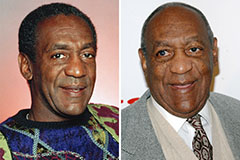If that judgment goes to appeal, the appellate court will have the opportunity to review both the precedent and the case under appeal, Maybe overruling the previous case regulation by setting a fresh precedent of higher authority. This may possibly materialize several times given that the case works its way through successive appeals. Lord Denning, first from the High Court of Justice, later on the Court of Appeal, provided a famous example of this evolutionary process in his development from the concept of estoppel starting while in the High Trees case.
In that perception, case law differs from one particular jurisdiction to another. For example, a case in The big apple would not be decided using case regulation from California. Alternatively, New York courts will analyze the issue depending on binding precedent . If no previous decisions within the issue exist, Ny courts could check out precedents from a different jurisdiction, that would be persuasive authority instead than binding authority. Other factors which include how previous the decision is as well as closeness towards the facts will affect the authority of a specific case in common law.
Similarly, the highest court within a state creates mandatory precedent to the reduce state courts underneath it. Intermediate appellate courts (including the federal circuit courts of appeal) create mandatory precedent to the courts under them. A related concept is "horizontal" stare decisis
Generally, trial courts determine the relevant facts of the dispute and utilize regulation to those facts, when appellate courts review trial court decisions to ensure the regulation was applied correctly.
It can be produced through interpretations of statutes, regulations, and legal principles by judges during court cases. Case regulation is adaptable, adapting over time as new rulings address emerging legal issues.
Case legislation, rooted within the common law tradition, is usually a vital ingredient of legal systems in countries similar to the United States, the United Kingdom, and copyright. Not like statutory laws created by legislative bodies, case law is formulated through judicial decisions made by higher courts.
States also normally have courts that take care of only a specific subset of legal matters, including family regulation and probate. Case legislation, also known as precedent or common regulation, may be the body of prior judicial decisions that guide judges deciding issues before them. Depending over the relationship between the deciding court and the precedent, case law can be binding or merely persuasive. For example, a decision with the U.S. Court of Appeals for the Fifth Circuit is binding on all federal district courts within the Fifth Circuit, but a court sitting down in California (whether a federal or state court) is not strictly bound to Keep to the Fifth Circuit’s prior decision. Similarly, a decision by one particular district court in Big apple is not binding on another district court, but the original court’s reasoning may possibly help guide the second court in reaching its decision. Decisions with the U.S. Supreme Court are binding on more info all federal and state courts. Read more
Just a few years in the past, searching for case precedent was a complicated and time consuming task, necessitating individuals to search through print copies of case legislation, or to purchase access to commercial online databases. Today, the internet has opened up a host of case law search opportunities, and plenty of sources offer free access to case law.
When you’re a graduate and looking to enhance your legal career consider our variety of postgraduate legislation courses and enrol today.
In 1996, the Nevada Division of Child and Family Services (“DCFS”) removed a 12-year previous boy from his home to protect him from the horrible physical and sexual abuse he experienced experienced in his home, also to prevent him from abusing other children within the home. The boy was placed within an crisis foster home, and was later shifted all over within the foster care system.
Every single branch of government produces a different form of law. Case legislation is the body of regulation produced from judicial opinions or decisions over time (whereas statutory legislation will come from legislative bodies and administrative law arrives from executive bodies).
Thirteen circuits (twelve regional and 1 for your federal circuit) that create binding precedent within the District Courts in their location, although not binding on courts in other circuits instead of binding over the Supreme Court.
When it relates to reviewing these judicial principles and legal precedents, you’ll very likely find they arrive as either a legislation report or transcript. A transcript is solely a written record from the court’s judgement. A legislation report to the other hand is generally only written when the case sets a precedent. The Incorporated Council of Regulation Reporting for England and Wales (ICLR) – the official regulation reporting service – describes law reports as being a “highly processed account of the case” and will “contain each of the parts you’ll find in a very transcript, along with a number of other important and helpful elements of articles.
She did note that the boy still needed extensive therapy in order to manage with his abusive past, and “to reach the point of being Secure with other children.” The boy was receiving counseling with a DCFS therapist. Again, the court approved with the actions.
The ruling of the first court created case regulation that must be accompanied by other courts until finally or unless possibly new legislation is created, or a higher court rules differently.
 Jaleel White Then & Now!
Jaleel White Then & Now! Mackenzie Rosman Then & Now!
Mackenzie Rosman Then & Now! Danny Pintauro Then & Now!
Danny Pintauro Then & Now! Bill Cosby Then & Now!
Bill Cosby Then & Now! Katey Sagal Then & Now!
Katey Sagal Then & Now!